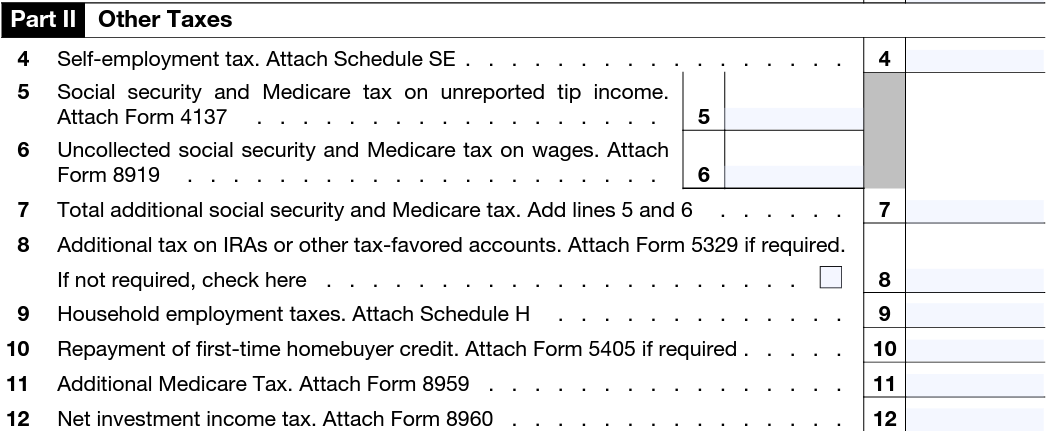What Forms Do I Need to Upload?
We highly recommend uploading the entire return, but we have a list of forms we read in, should you need to request specifics from your client.
When uploading a tax return, a nice, clean PDF is the best way to upload something into the software to achieve the optimum result. If not completed, you run the risk of the return failing to be accepted. Also, uploading the full return will include any supporting schedules or forms that are required by Form 1040 for filing.
Uploading just the 1040 is not always enough for the software. If you do not provide enough information, you'll have to add the missing information to the file and upload it again, so we cannot stress the importance of uploading the entire return enough. We also continuously support new forms and schedules, so uploading the entire return can be beneficial for you to keep up to date. Please note, however, that individual uploads cannot exceed 50MB; for very large returns, you can read some tips for reducing file size here.
We review all uploaded files for accuracy between 8:00 a.m. and 5:00 p.m. Central Time.
Uploading just the 1040 is not always enough for the software. If you do not provide enough information, you'll have to add the missing information to the file and upload it again, so we cannot stress the importance of uploading the entire return enough. We also continuously support new forms and schedules, so uploading the entire return can be beneficial for you to keep up to date. Please note, however, that individual uploads cannot exceed 50MB; for very large returns, you can read some tips for reducing file size here.
We review all uploaded files for accuracy between 8:00 a.m. and 5:00 p.m. Central Time.
Here's a list of the forms and schedules we support and need if the return requires:
- Form 1040 pages 1 and 2 (pages 1, 2, and 3 for Form 1040-SR returns)
- Schedule 1 - Additional Income and Adjustments to Income
- Schedule 2 - Additional Taxes
- Schedule 3 - Additional Credits and Payments
- Schedule 4 - Other Taxes (2018 returns)
- Schedule A - Itemized Deductions
- Schedule B - Interest and Ordinary Dividends
- Schedule C - Profit or Loss From Business
- Schedule D - Capital Gains and Losses
- Schedule D for AMT - Capital Gains and Losses (if return is subject to AMT)
- Schedule E - Supplemental Income and Loss
- Schedule SE - Self-Employment Tax
- Form 2441 - Child and Dependent Care Expenses
- Form 2555 - Foreign Earned Income
- Form 4797 - Sales of Business Property
- Form 4952 - Investment Interest Expense Deduction
- Form 5695 - Residential Energy Credits
- Form 6251 - Alternative Minimum Tax (AMT)
- Form 8606 - Nondeductible IRAs
- Schedule 8812 - Credits for Qualifying Children and Other Dependents
- Form 8863 - Education Credits (American Opportunity and Lifetime Learning Credits)
- Form 8889 - Health Savings Accounts (HSAs)
- Form 8959 - Additional Medicare Tax
- Form 8960 - Net Investment Income Tax
- Form 8962 - Premium Tax Credit
How do you know if the above forms are required? Form 1040 will let you know. For example, as seen below in the screenshots from Form 1040: 

- Line 7 lets you know Schedule D is required (unless the box is checked).
- Line 8 and/or line 10 lets you know Schedule 1 is required.
- Line 17 and/or line 23 lets you know Schedule 2 is required.
- Line 20 lets you know Schedule 3 is required.
Likewise, some forms also require additional forms, such as with Schedule 2. As seen below, Schedule 2 will let you know if any of Schedule SE, Form 8959, or Form 8960 are required.

NOTE: Our OCR (Optical Character Recognition) software is not able to merge separate PDFs that are uploaded as multiple parts to the same return. Please combine all the pages from Form 1040 and any additional necessary forms into one combined PDF for accurate and timely processing.
If you find your combined PDF is larger than our 50MB size limit, you can find tips on how to reduce the size of your PDF in our article here.
As always, feel free to Contact Us if you have any questions along the way!